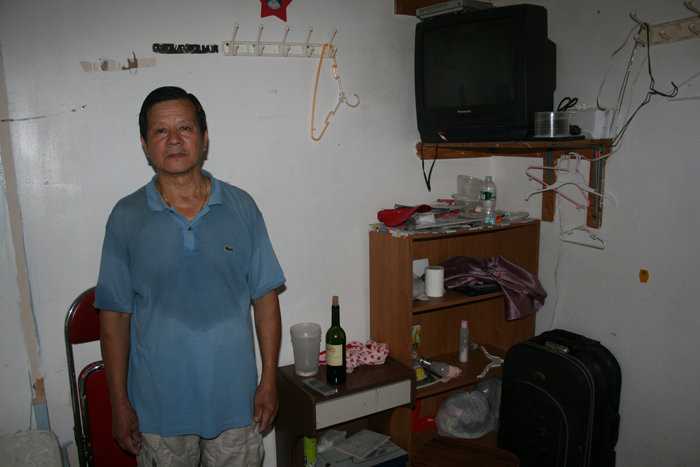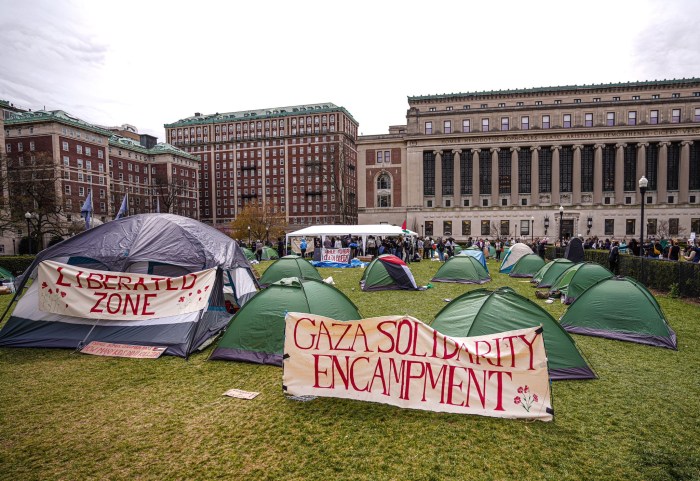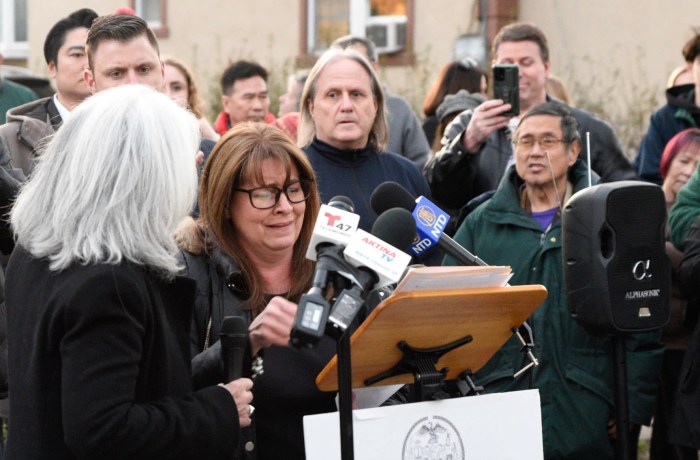
BY ALINE REYNOLDS | Fifty residents of 35 Market St., a low-income rental apartment in Chinatown, were locked out of their homes on Wed., July 6, shortly after city officials raided their apartment building.
Eight of the eighteen units in the six-story building were illegally partitioned, according to the NYC Department of Buildings, who, in responding to a 3-1-1 complaint last week, discovered the serious building code violation.
Past and current leaseholders in the building devised a system in which they subdivided apartments to create more bedrooms in order to split up their monthly rent payments. By subletting the extra rooms, the tenants blocked fire escapes that are supposed to serve as emergency exits for everyone in the building, according to Ryan Fitzgibbon, deputy press secretary for the D.O.B.
Last Wednesday afternoon, officials began taping “vacate order” notices onto the doors of the tenants’ apartments, which are separated by narrow hallways. The building superintendent, per the landlord’s orders, proceeded to change the residents’ keys so that they couldn’t return until the vacate orders were lifted.
“If we find conditions that are immediately hazardous and that put [residents’] lives at risk, the safest thing is to vacate the building — for their safety,” said Fitzgibbon. “The owner needs to restore the secondary means of egress so we can allow people back in.”
The building is one of scores around the city — particularly in densely packed immigrant neighborhoods such as Chinatown — whose units contain illicit partitions, according to local real estate agents.
“If the city wants to enforce everything by the code, it would be a disaster. One-third of the New York City people would be sleeping on the street,” said Philip Lam, who has been brokering aprartments in Chinatown for two decades.
“The inspections are meant to save lives, but they leave people homeless,” said Sean Tang, a broker who has volunteered to help accelerate the D.O.B.’s reinspection of 35 Market St.
While enforcement of the city’s housing codes teaches landlords and tenants an important lesson, Tang said, the tenants “have no place to go.”
In attempt to mitigate the problem, the NYC Department of Housing Preservation and Development teamed up with the American Red Cross in Greater New York to offer the displaced tenants several nights of free lodging at a Red Cross shelter in midtown-west and the Y.M.C.A. in Flushing, Queens. The Red Cross also provided replacement food and clothing to those in most need.
Chinatown’s affordable housing shortage is forcing people into such dire and dangerous living situations, according to NYC District One Councilmember Margaret Chin, who also helped place the tenants in the temporary shelters.
“There is no easy solution here. This is a civil and human rights issue,” said Chin. “To tackle this problem, we’ve been [asking for] full commitment by the city and community.”
Some of the evicted tenants will be re-admitted to their homes once the D.O.B. reinspects the units and removes the vacate orders if the violations have been cleared. This will likely occur in the next week, according to the D.O.B.
Others, however, who have no rooms to go back to, felt unjustly banished from their homes. They watched in dispair as the building’s superintendent tore down the walls of their rooms, many of them the size of closets.
“They should give me more time to prepare to pack up. It’s not like the building’s going to fall down and you have to get out right away,” said Hong Chen, who has been sub-letting a room on the building’s fourth floor with her husband since late last year. Chen and her husband are now crashing at friends’ apartments for the time being, since they other sub-letters in the building couldn’t prove documentation of their residency and were therefore denied city-sponsored temporary housing.
“I have no place to sleep. Maybe I can sleep in the hallway,” said Chen’s great uncle, 66-year-old Jiang Zhu Zheng, who was visiting family in China when he was notified by his niece about the vacate order.
The senior said he is intent on staying in his home of 17 years.
“Everybody likes this building. We know each other very well,” Zhu Zheng said. “For my age, I don’t want to move around.”
Emmie Sun, 23, was perturbed to be greeted by housing inspectors into her own apartment the afternoon of the raid.
“They told us we can’t sleep here, and they brought us to a hotel,” said Sun, who has lived with six other family members in the cooped-up, four-bedroom railroad apartment since she was a teenager.
If they didn’t leave immediately, Sun said, the family was told they could be arrested.
Sun’s 64-year-old cousin, Zhao Xun Zhang, had converted the three-bedroom apartment into four bedrooms several years ago so the family could sublet one of the rooms to a stranger. Now that the apartment will be converted back into three bedrooms, however, Zhang said the family might not be able to keep up with its $1,600-a-month rent once the vacate order is removed.
Even after turning the unit into a four-bedroom apartment, Zhang said, he was forced to sleep underneath a bed for a few years.
“I feel like I’m living in a pig pen – it’s so confined,” Zhang complained.
A retired senior, Zhang has been on the wait list for public housing at the nearby Smith Houses for five years, to no avail. “If no one moves out, I can’t move in. But I have nowhere to live… how can I keep on waiting?” he said. “Maybe I’ll die and never get to enjoy public housing from the government.”
The building’s owner, Lucky’s Inc., faces up to $100,000 in city fines for the violations, which will be adjudicated by the NYC Environmental Control Board in the coming months. The owner was not available for comment in press time.
— Translation for some quotes by Phlip Lam and James Huang of the Chinatown Partnership.

















